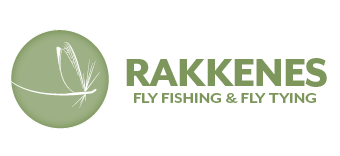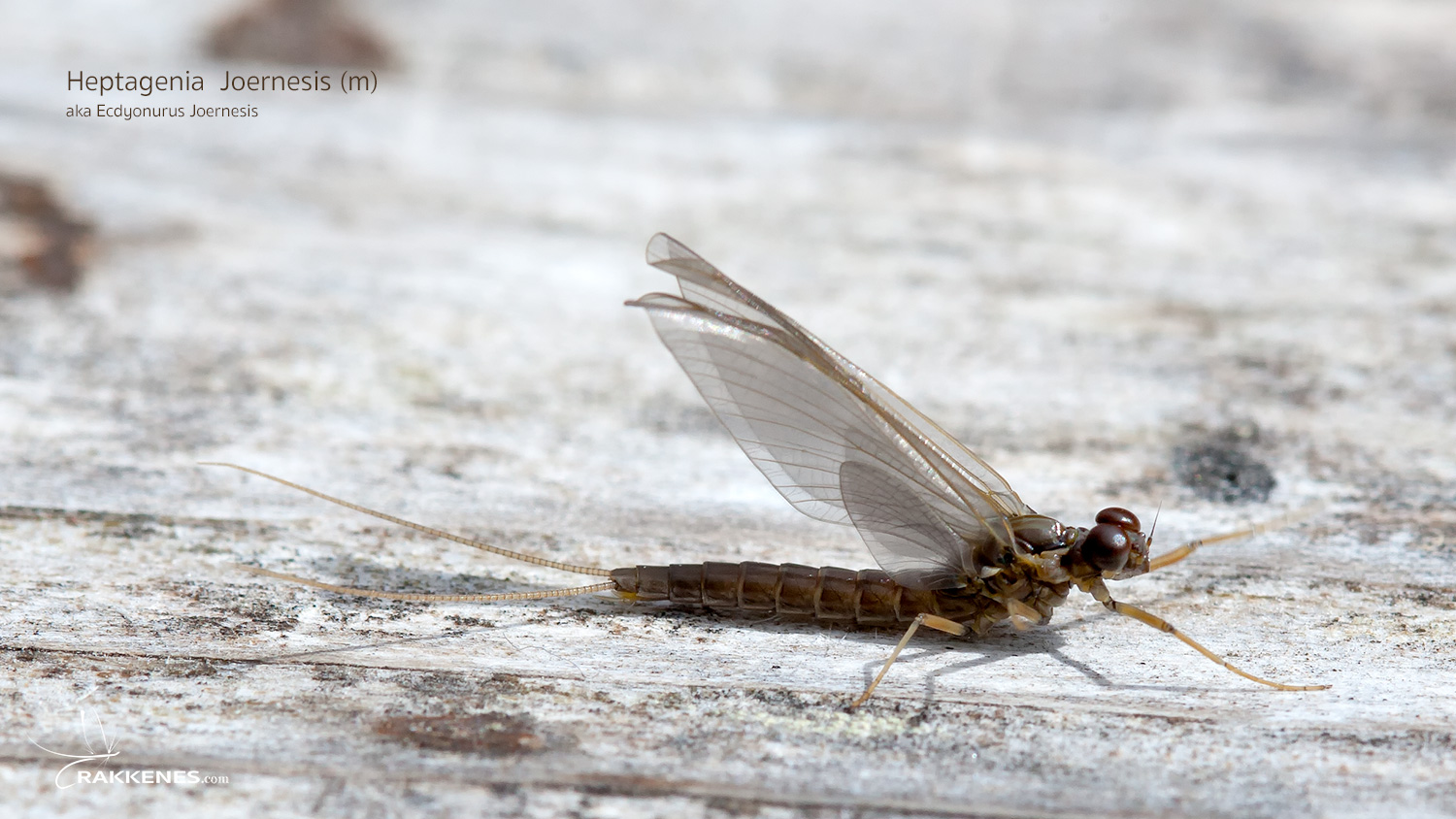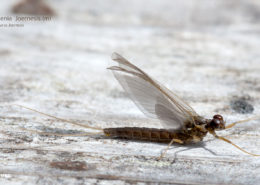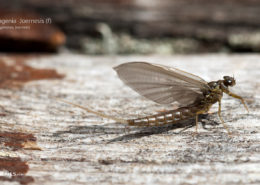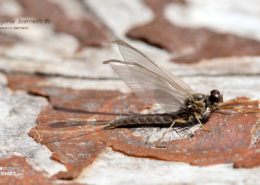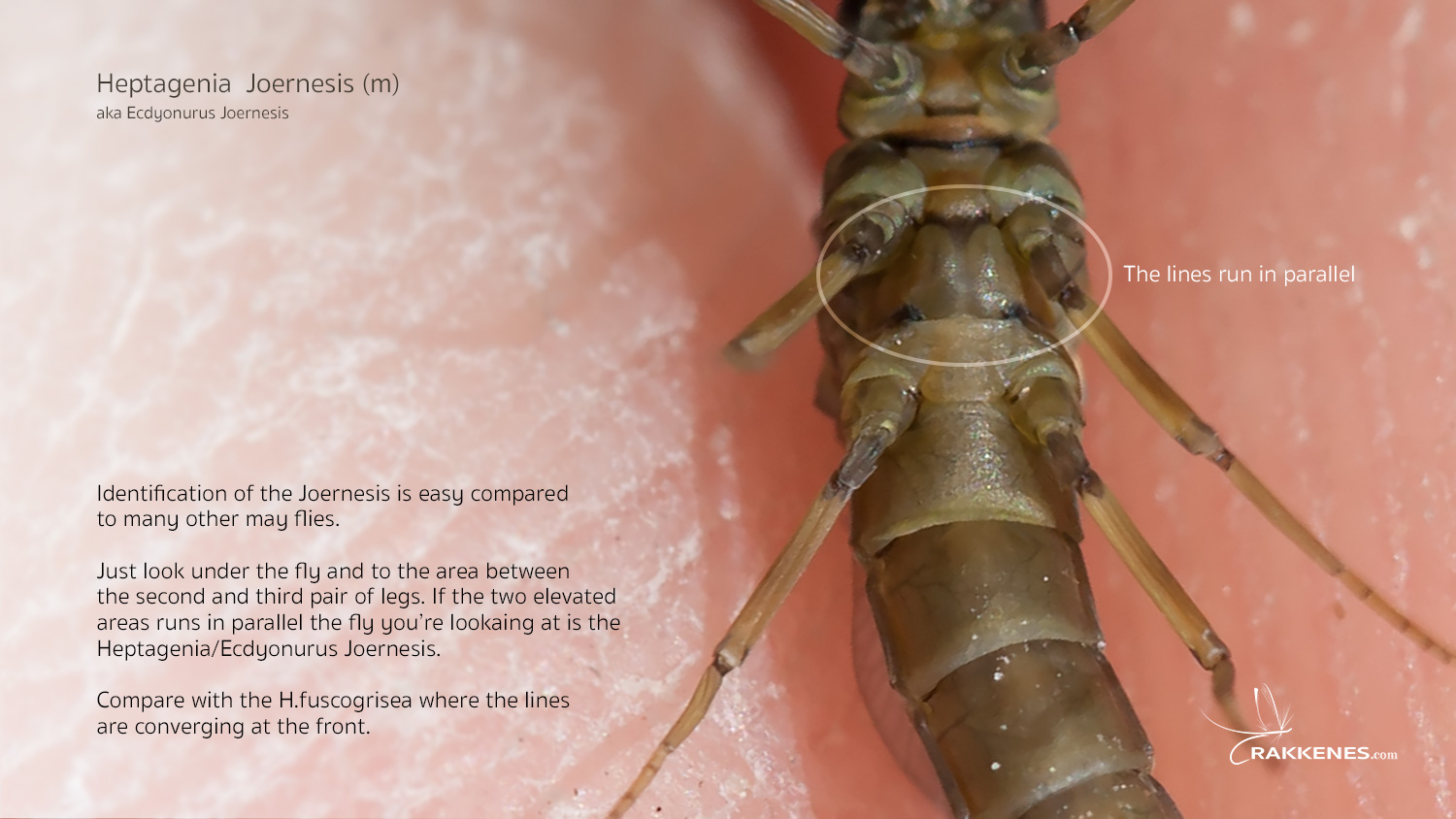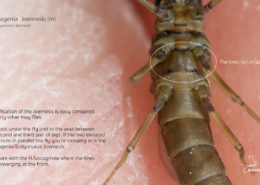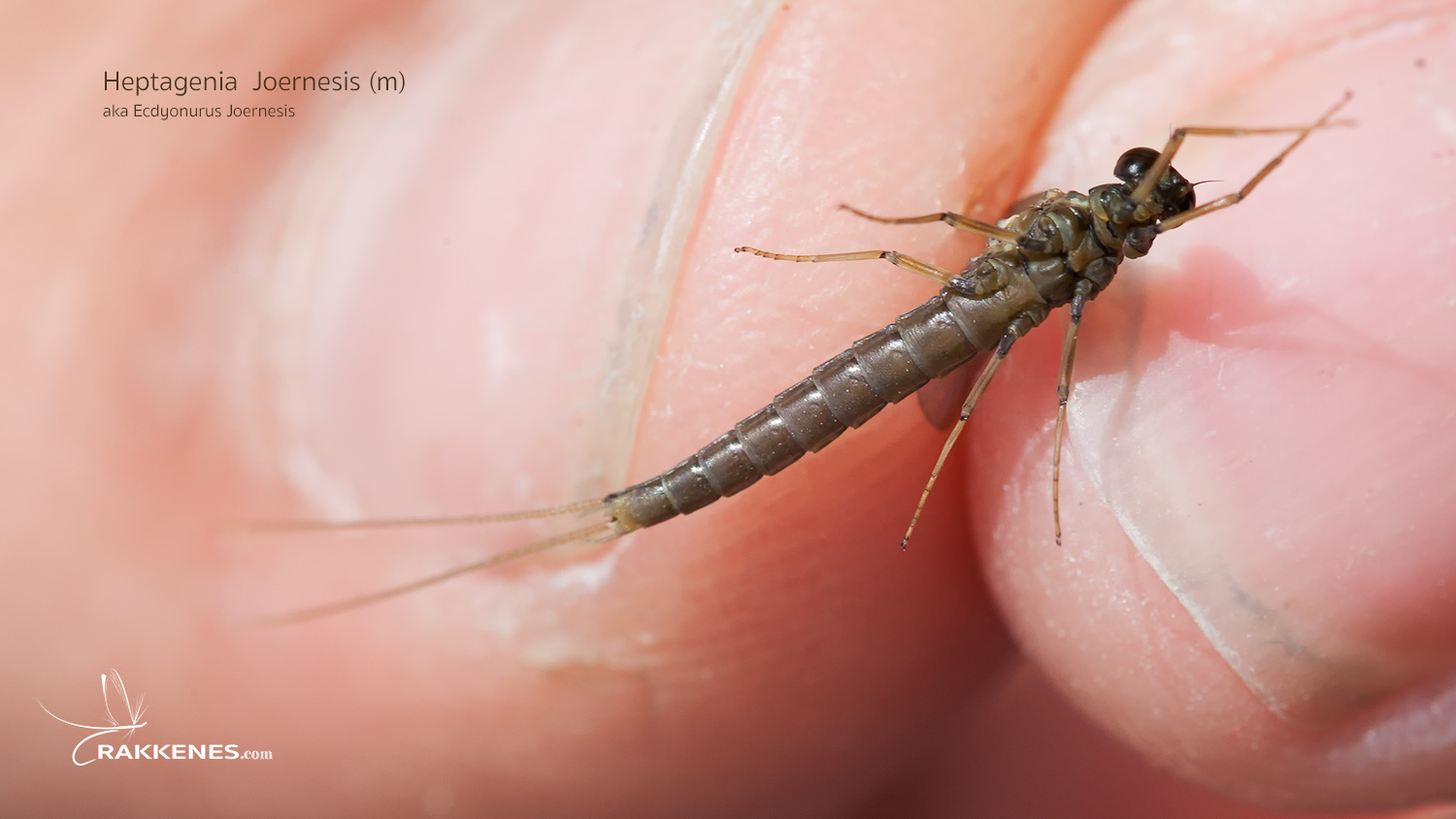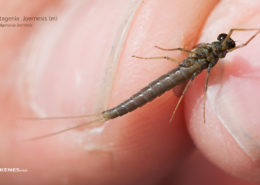The Ecdyonurus Joernesis was first identified in Norway in 1909 by the Swedish entomologist Simon Bengtsson. It is not one of the most common of the mayflies, but is a regular inhabitant in the waters in the eastern part of the south of Norway. They are categorized as an Heptageniidae, and thus belong to the clinging nymphs. They are known both as the Heptagenia Joernesis aka Ecdyonurus Joernesis
In old literature it is stated that these bugs hatch late in the summer. I don’t know if they are crazy in Trysil, or the climate has changed all that, but now these bugs are hatching in numbers early in the season.
The bugs are 9-11 millimeters in length, and should thus be tied on a size 14 or even a 16 standard dry fly hook. These pictures were all taken on 11. June 2016. Hatching took place between 11 am and 13 pm.
These bugs are easy to identify. Just look underneath and between the second and third pair of legs. There you’ll see two elevated bumps. The lines should run in parallel – if they converge at the top it’s one of the other Heptagenias common in the Norwegian waters.
Imitating the Heptagenia Joernesis aka Ecdyonurus Joernesis bugs is also straight forward. Opt for a regular dry fly hook, size 14. A good starting pattern is the regular Paradun, or parachute. But also tie up some alternative patterns that float low in the water – a good alternative is the Comparadun. Use split tails on both.
Which color dubbing should you use?
The bug is olive/brown-olive, but the color can vary depending on the water you are fishing. Using Fly-Rite as the reference, I would opt for #34 Quill Gordon/Brown Drake Yellow as the primary color for the abdomen. If you’re into a more exact color representation, try mixing the #34 with #45 Mottled Caddis/Pale Yellow Olive. 60% No 34 and 40% No45.
If you’re tying the Paradun, use a golden olive hackle and long fibres from the same neck as tails.
I am building a database rich with photos, illustrations and imitation tips on the mayfly species found in the Trysil region in Norway. Most of the mayflies are found all over the world, and these guides are thus universally useful. Here are the articles published this far on the Heptagenias.
